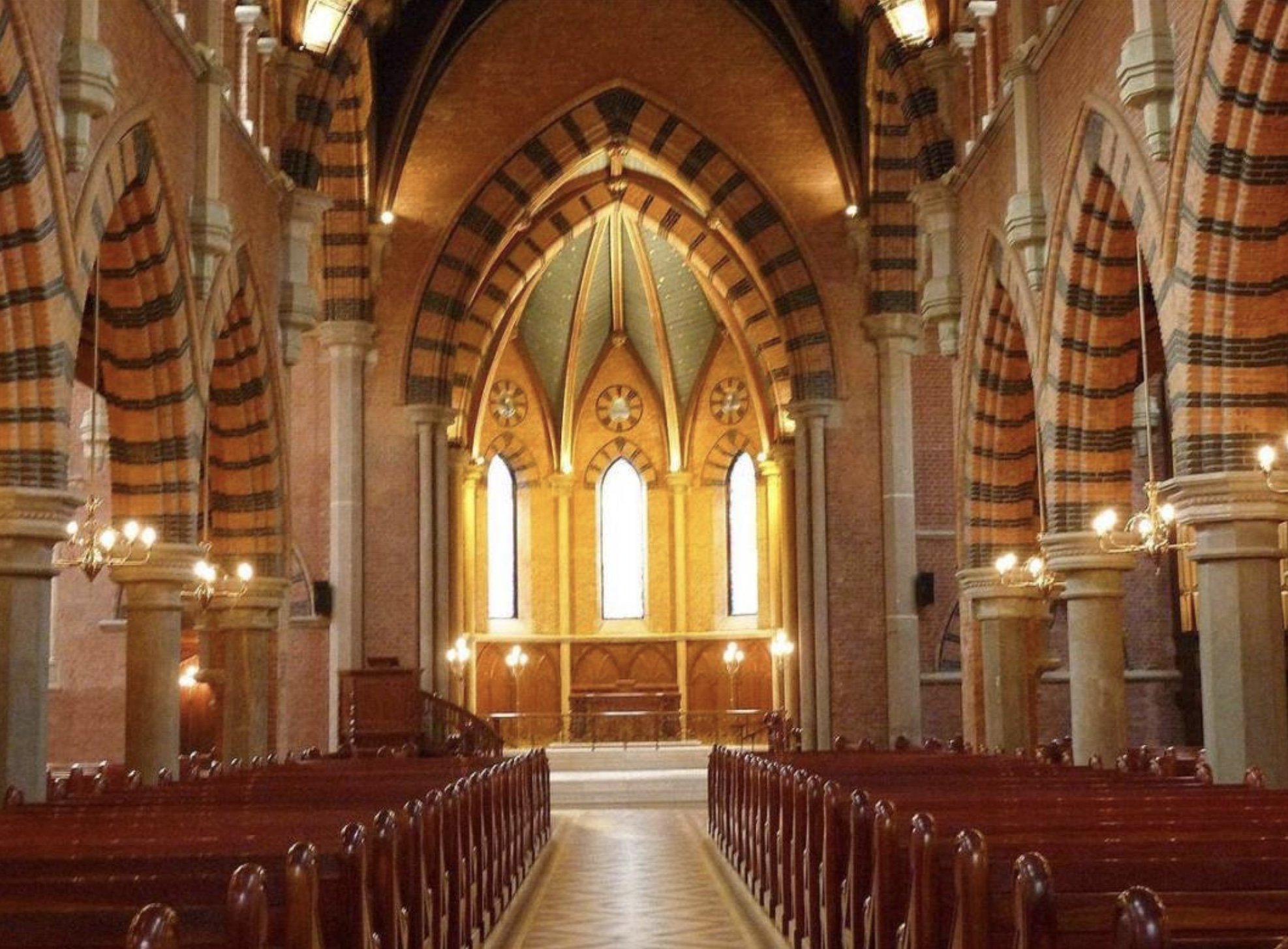Holy Trinity Cathedral, Shanghai
Scott’s appointment
In July 1850, the roof of Shanghai’s first cathedral collapsed just before a Sunday service. The building in question had been completed only two years earlier by the architect William Strachan. Some hasty repairs followed, but thirteen years later in 1863, the church was finally no longer fit for purpose- the British Episcopal Church Society therefore wrote to Sir George Gilbert Scott who by then had established himself as the pre-eminent architect of the period.
The Church Society requested from Scott a new church able to hold 800 congregants, the cost of which ought not to exceed £20,000. By the November of 1864, Scott had submitted his first design for the church, a building after the style of early thirteenth-century which, contrary to the Society’s wishes, seated only 460. William Kidner, a young architect, was relocated to Shanghai and began work on revising Scott’s initial design. Amongst other details changed on the insistence of the Church Society, Kidner added a spire and enlarged the building. Scott wrote of Kidner that he ‘so thoroughly understood his views and… appeared to be so capable of carrying them out satisfactorily’.
Construction
On the 26th of May 1866, the foundation stone for the cathedral was laid in the presence of a number of foreign delegates and members of local Masonic lodges. Construction pressed on over the course of the next three years so that, in August 1869, the church was finally able to open. The result of Scott and Kidner’s collaboration was an aisled church of 152 feet in length complete with two chapels, transepts, and a vestry. The spire was the last element to be completed some decades later in 1893.
Kidner & Scott
Scott’s original design for the church does not survive, so it is difficult to discern how much the building’s genesis owes to William Kidner. It is clear that Kidner had a hand in enlarging the building and adding a spire to Scott’s original plan, and it also seems likely that he was also responsible for having the church built in brick rather than stone, and replacing Scott’s brick vaulting with a lighter wooden ceiling. Gavin Stamp suggests that much of the detail and stylistic influence of the building was typical of Scott’s earlier work, especially at Camberwell, where Scott had worked closely with Ruskin. Stamp called Shanghai Cathedral ‘somewhat Ruskinian’.
In recent times, the cathedral has undergone a number of changes and challenges. Kidner’s spire was destroyed during the Cultural Revolution and the building was turned over to use as a cinema. Happily, since 2006, the building has been returned to its original use as a church, having been restored by the Zhang Ming Architectural Design Firm.
Bibliography
Denison, Edward, and Guang Yu Ren. Building Shanghai: The Story of China's Gateway, (Chichester, 2006)
Roskam, Col. New Perspective: Trinity Church and Treaty Port-Era Shanghai (2020)
Stamp, Gavin. Gothic for the Steam Age: An Illustrated Biography of George Gilbert Scott, (London, 2015)


